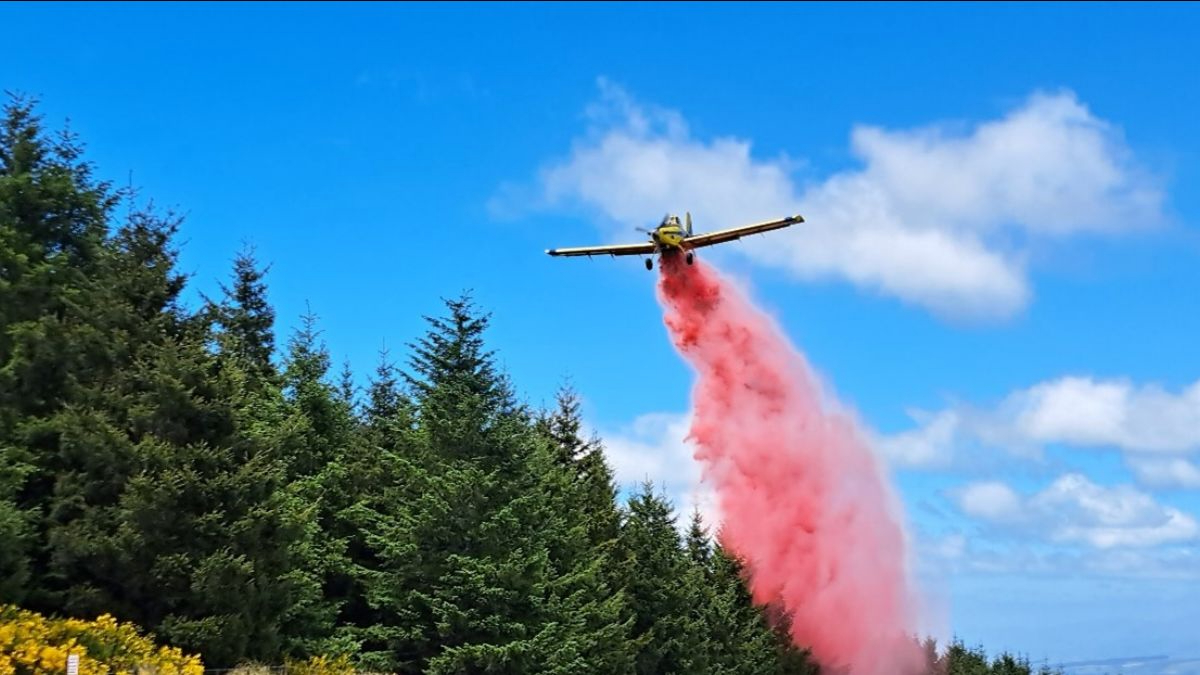Alex Airfield to host fire retardant exercise
Anna Robb
28 November 2024, 4:15 PM
 Fire retardant, ammonium phosphate coloured with a red dye, will be dropped by a plane, during a FENZ training day being held in Alexandra tomorrow. PHOTO: FENZ
Fire retardant, ammonium phosphate coloured with a red dye, will be dropped by a plane, during a FENZ training day being held in Alexandra tomorrow. PHOTO: FENZThere will be more activity than usual in the skies over the Alexandra airfield tomorrow, and walkers and bikers will find the airfield cordoned off.
The airfield is hosting the annual training day for Fire and Emergency New Zealand’s (FENZ) South Island fire retardant specialists.
Team members will be practising mixing the retardant and loading it into a plane, which will make three passes over the airfield dropping the retardant between about 11am and 4pm.
The Civil Aviation Authority will issue a NOTAM (Notice to all Airmen) advising all aircraft of the operations while the training day is underway and the airfield itself will be cordoned off to stop people coming into the area on foot.
Fire and Emergency Group Manager Bobby Lamont said the fire retardant was ammonium phosphate, a colourless fertiliser that was harmless to people and the environment.
"Red dye is added to it so our pilots and firefighters can see where it's been spread. The cordons are to make sure walkers or bikers don't stray onto the edges of the airfield and come out spattered with red."
People using the area needed to be aware tracks inside the Airport boundary on the northern side would be cordoned off while they were being used for the training, Bobby said.
About 25 people will be taking part in the training, and it was an important opportunity to refresh their skills ahead of the summer months when the risk of wildfire was highest.
Many of the participants were from the joint Otago-Southland retardant team and most of the rest are from Canterbury and South Canterbury, with a small number from the lower North Island.
Retardant is one of the very effective methods firefighters use to slow or stop the spread of a vegetation fire or to protect sensitive areas and critical infrastructure.
Other methods include using heavy machinery to create physical firebreaks, dropping water on the fire from helicopters and fixed wing aircraft, and ground crews with hoses and handtools.
Retardant is usually spread by air using fixed wing aircraft to cover a large area quickly. It can also be spread from a helicopter with a monsoon bucket or by ground crews targeting a small area.
Regarding the hot weather Central Otago had been experiencing, Bobby said FENZ were keeping an eye on fire indices.
“We’ve been monitoring since the start of Spring.
“Fire danger indices are climbing as expected but due to the rain in Spring fuels are still relatively green.”
It was unlikely any fire restrictions would be imposed in the next couple of weeks, however FENZ was keeping a watchful eye.
“Yes we are looking at restrictions but not in the short term. It all depends on the weather.”
He urged anyone thinking of lighting a fire to visit www.checkitsalright.nz
Have a story to share?
Contact [email protected]
NEWS
PUBLIC NOTICES
JOBS








